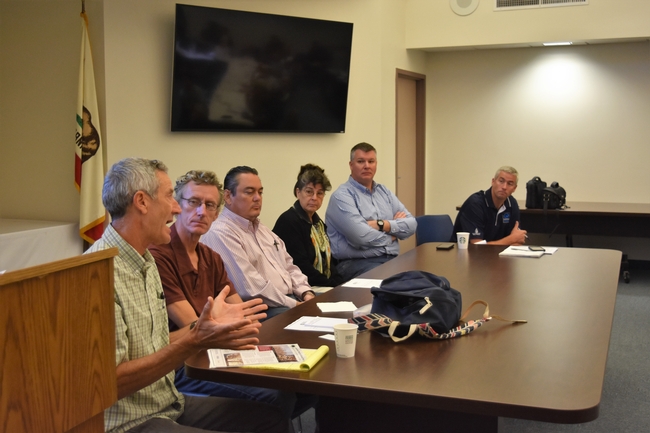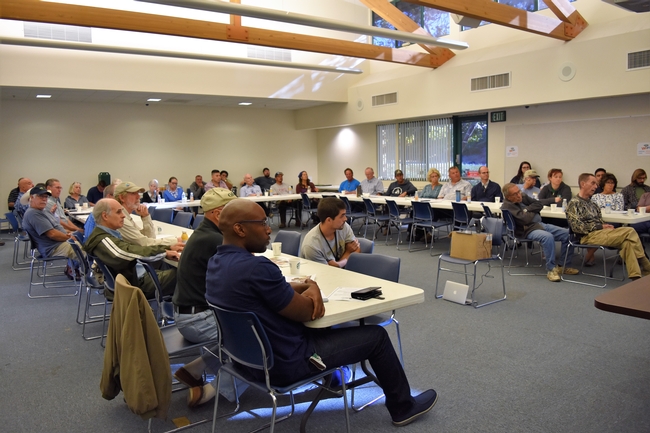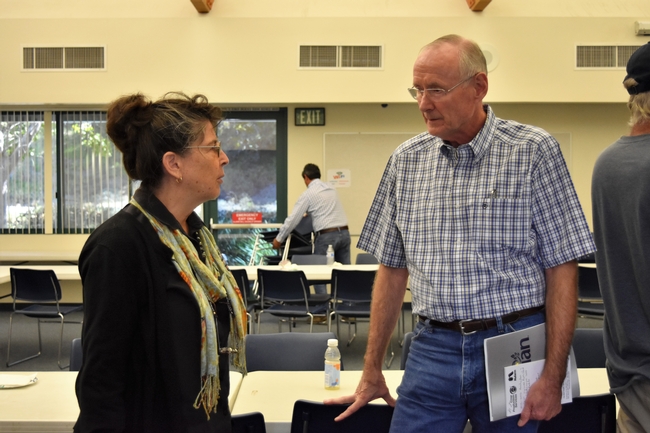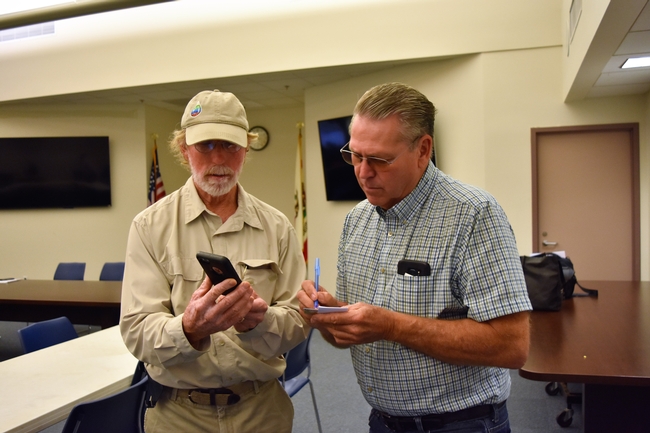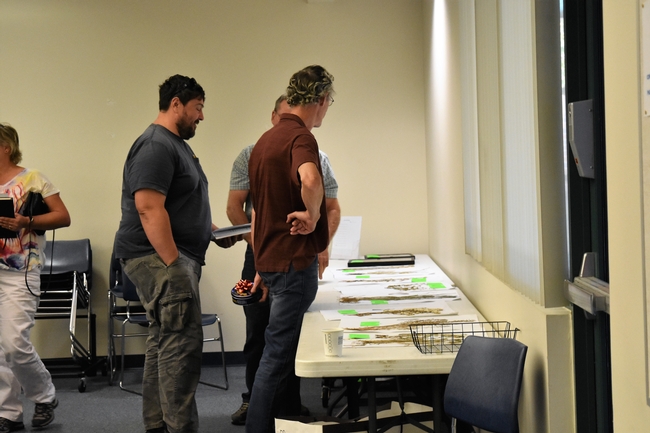
Posts Tagged: Polyphagous Shot Hole Borer
Controlling Shot Hole Borer
A recent study by Joey Mayorquin and team shows a promising chemical response in sycamore trees infected with Fusarium Dieback. This holds hope for the pest/disease complex in avocado, as well.
Chemical Management of Invasive Shot Hole Borer and Fusarium Dieback in California Sycamore (Platanus racemosa) in Southern California
Fusarium dieback (FD) is a new vascular disease of hardwood trees caused by Fusariumspp. and other associated fungal species which are vectored by two recently introduced and highly invasive species of ambrosia beetle (Euwallacea spp. nr. fornicatus). One of these ambrosia beetles is known as the polyphagous shot hole borer (PSHB) and the other as the Kuroshio shot hole borer (KSHB). Together with the fungi that they vector, this pest–disease complex is known as the shot hole borer–Fusarium dieback (SHB-FD) complex. Mitigation of this pest–disease complex currently relies on tree removal; however, this practice is expensive and impractical given the wide host range and rapid advancement of the beetles throughout hardwoods in southern California. This study reports on the assessment of various pesticides for use in the management of SHB-FD. In vitro screening of 13 fungicides revealed that pyraclostrobin, trifloxystrobin, and azoxystrobin generally have lower effective concentration that reduces 50% of mycelial growth (EC50) values across all fungal symbionts of PSHB and KSHB; metconazole was found to have lower EC50 values for Fusarium spp. and Paracremonium pembeum. Triadimefon and fluxapyroxad were not capable of inhibiting any fungal symbiont at the concentrations tested. A 1-year field study showed that two insecticides, emamectin benzoate alone and in combination with propiconazole, and bifenthrin, could significantly reduce SHB attacks. Two injected fungicides (tebuconazole and a combination of carbendazim and debacarb) and one spray fungicide (metconazole) could also significantly reduce SHB attacks. Bioassays designed to assess fungicide retention 1 year postapplication revealed that six of the seven fungicides exhibited some level of inhibition in vitro and all thiabendazole-treated trees sampled exhibiting inhibition. This study has identified several pesticides which can be implemented as part of an integrated pest management strategy to reduce SHB infestation in low to moderately infested landscape California sycamore trees and potentially other landscape trees currently affected by SHB-FD.
https://apsjournals.apsnet.org/doi/abs/10.1094/PDIS-10-17-1569-RE
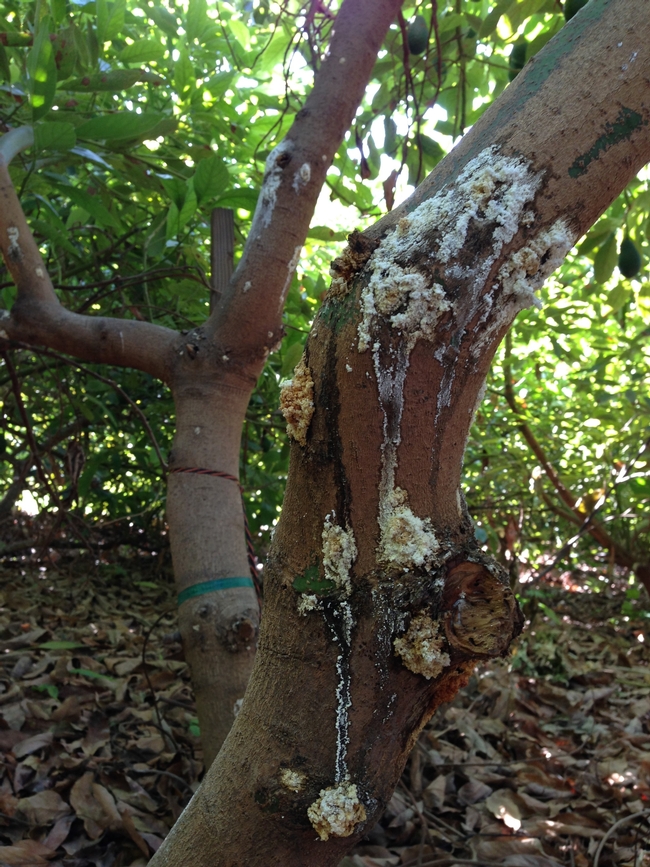
shothole 1
Invasive Shot Hole Borer Gone Global
Natural Resources Advisor, UC Cooperatiove Extension
With a finding in the KwaZulu National Botanical Gardens reported in November 2017, the invasive shot hole borer (ISHB) (polyphagous and Kuroshio borers)/ fusarium dieback pest disease complex is now known to be found on three continents. Native to parts of Asia – polyphagous SHB comes from Vietnam, while Kuroshio SHB is native to Taiwan – the problems has spread to Israel, the US, Mexico, and now South Africa. Since first being discovered, PSHB has been identified in urban areas in parts of the country that are several hundred miles apart – from Durban on the east coast to the large metropolitan area of Johannesburg further north, with the Botanical Garden in-between. Samples from the city of George, in a region on the southern coast known as the Garden Route, are currently being analyzed. South Africans are very concerned about the potential to damage their extensive urban forests and are developing a national surveillance and management plan. KwaZulu National Botanical Garden is part of the International Plant Sentinel Network, where exotic species are grown to provide an early warning system for emerging pests. The US counterpart if the Sentinel Plant Network run by the American Public Gardens Association and the National Plant Diagnostic Network. Finding this pest serves as a case in point on the value of these kinds of international networks in the battle against invasive pests.
Closer to home, there is actually, potentially, maybe some good news from the Tijuana River Valley. This is the valley that has been the hardest hit by the KSHB. In 2015 the natural willow forests were tall and lush and then just a few months later they were devastated - the before-and-after photos of this event have become iconic. John Boland, a researcher working in the Tijuana River Valley reports that in areas that were severely damaged by the pest, the willows are now vigorously recovering. They are growing back from their stumps via long re-sprouts, and this new growth is not showing signs of attack. Surveys in 2017/18 found a 6% median infestation rate, down from a 97% infestation rate observed in 2015/16. The initially observed high infestation rates in the wet forest areas may have been influenced by extremely high sewage pollution into the Tijuana River, and these high infestation rates are unlikely to occur elsewhere. Boland's “soft tree hypothesis” states that willows growing in nutrient enriched waters grow quickly, laying down wood with low density and high water content, i.e., they have ‘soft' wood. This kind of growth promotes beetle infestation, as it's easy to create tunnels, and favorable for the fungal symbiont. Willows growing elsewhere would have ‘hard' wood and suffer fewer beetle attacks. His initial data analysis supports this hypothesis. If true, this would mean that riparian areas with higher quality water could see much less severe infestation. It will be interesting to observe variations in infestation ecology around the region. Damage to avocado groves in California appears to be less severe than initially anticipated – I hope the same is true for natural areas.
Boland, J.M. 2018. The Kuroshio Shot Hole Borer in the Tijuana River Valleyin 2017-18 (Year Three):
Infestation Rates, Forest Recovery, and a New Model. Final Report for US Navy, US Fish and Wildlife Service and Southwest Wetlands Interpretive Association. 74 pages.
Photo: A typical resprouting arroyo willow. The original trunk is large, broken and riddled with KSHB holes. At the time of the photo, the four vertical resprouts were growing strongly and had no KSHB holes. (John Boland)
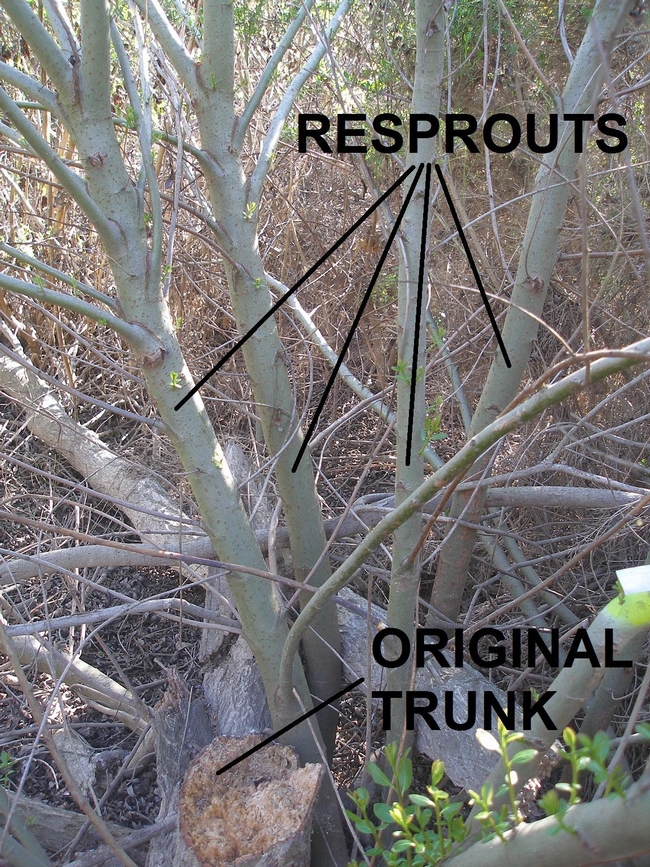
Boland willow
PSHB Found in South Africa
The following is the abstract of a recent article highlighting the occurrence of the invasive shot hole borer that is found in California and described in our blog site:
Invasive species are a problem world-wide and this is an example of how invasives can arrive in multiple countries at the same time and/or how possibly they might move from somewhere like California to another far away country like South Africa. People are the usual agents for carrying these pests around the world.
The polyphagous shot hole borer (PSHB) and its fungal symbiontFusarium euwallaceae: a new invasion in South Africa
The polyphagous shot hole borer (PSHB), an ambrosia beetle (Coleoptera: Curculeonidae: Scolytinae) native to Asia, together with its fungal symbiont Fusarium euwallaceae, has emerged as an important invasive pest killing avocado and other trees in Israel and the United States. The PSHB is one of three cryptic species in the Euwallacea fornicatusspecies complex, the taxonomy of which remains to be resolved. The surge in the global spread of invasive forest pests such as the PSHB has led to the development of programs utilizing sentinel tree plantings to record new host-pest interactions. During routine surveys of tree health in botanical gardens of South Africa undertaken as part of a sentinel project, an ambrosia beetle/fungal associate was detected damaging Platanus x acerifolia(London Plane) in the KwaZulu-Natal National Botanical Gardens, Pietermaritzburg.
Identification of the beetle by sequencing part of the mitochondrial cytochrome oxidase c subunit 1 (COI) gene confirmed its identity as PSHB, and specifically one of the invasive haplotypes of the beetle. The associated fungus F. euwallaceaewas identified based on phylogenetic analysis of elongation factor (EF 1-α) sequences. Koch's postulates have confirmed the pathogenicity of fungal isolates toP. x acerifolia. This is the first report of PSHB and its fungal symbiont causing Fusarium dieback in South Africa. This report also represents the first verified case of a damaging invasive forest pest detected in a sentinel planting project, highlighting the importance of such studies. Given the potential impact these species present to urban trees, native biodiversity and agriculture, both the PSHB and its fungal symbiont should be included in invasive species regulations in South Africa.
The full paper is at:
https://doi.org/10.1007/s13313-018-0545-0
Photo: Infected sycamore which is related to London plane tree.
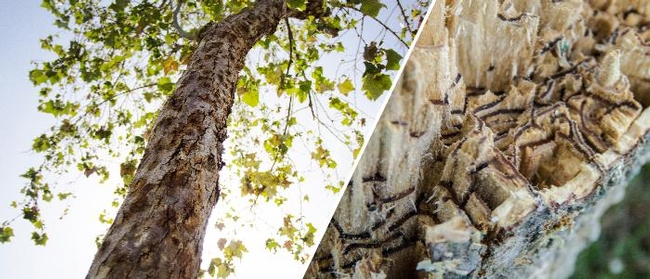
PSHB sycamore
Avocado Pest Discussion – trying to stay one step ahead
The University of California Cooperative Extension conducted an Avocado Pest Management Round Table grower meeting in Fallbrook, CA on September 28, 2017. Approximately 64 growers, industry, Pest Control Advisors, and other stakeholders were present. Sonia Rios, Subtropical Horticulture Farm Advisor, University of California Cooperative Extension (UCCE), Riverside/San Diego Counties gave a talk on “Introduction to Avocado Weed Management.” Tim Spann from the California Avocado Commission (CAC) spoke on a potential threat to California's avocado industry, “A Review: Redbay Ambrosia Beetle & Laurel Wilt Disease.
Growers were able to participate in 2 round table discussions, one on “Old challenges/possible new solutions - pesticide resistance, proper spray application, new pesticides” and another on New Challenges in the Avocado industry. Round Table panel members were: Mary Lu Arpaia, University of California, Riverside/CE, Frank Byrne, University of California, Riverside/CE, Kevin Turner, CAL FIRE, Tim Spann, CAC, Enrico Ferro, Avocado Grower/PCA, Sonia Rios, UCCE, Victor Lopez, Crop Production Services.
The growers will be looking forward to the next Round Table meeting in the Spring. If you missed the meeting, below is a link to a recording of the meeting https://soundcloud.com/user-95194984/controlling-pests-in-avocado-roundtable-meeting
Mulch Can be Dangerous
I used to think that you could not add enough mulch into an orchard and cause any harm. Well, I've been proved wrong a number of times. Some people have gone overboard and put on three to five feet for some reason and it causes all manner of problems, the least of which is usually just getting around in the orchard. But organic matter is the energy source that drives a lot of positive good in an orchard. It provides nutrients for the plants, as well as the microbes that protect plant health, keeps weeds down and maintains an even soil moisture content.
In agriculture, mulch has been viewed as an important input to maintain good tree health, especially in avocado orchards. That has been true up until the introduction of Asian Citrus Psyllid (ACP) and Polyphagous Shot Hole Borer (PSHB, and a close relative Kuroshio Shot Hole Borer ((KSHB))) into California. These are insects that carry disease that are lethal to trees. The ACP can carry a bacteria that causes the death of citrus trees. It has been a major cause of tree death in Florida, as well as other parts of the world. It is severely threatening the industry in that State as it does in California. It also threatens all backyard citrus wherever they are found. PSHB, on the other hand, is another insect that carries a fungal disease that threatens not just one species of tree, such as avocado, but many native trees, such as coast live oak, sycamore, willow and many other native tree species.
Initially these pests were pretty much confined to the Los Angeles Basin and south, but ACP has moved into the Central Valley, and through Ventura up the coast. Its progress has been monitored by traps. PSHB has been found in parts of Ventura County, but it is not widespread, as far as we know at this point. Both insects can be easily moved by contaminated plant material. ACP can be found in infested leaves and on fruit. Moving that material increases the likelihood of spread. PSHB can be moved in wood where it makes its galleries. Moving wood and chips, can spread this pest/disease complex.
The way to help control the spread of these two pest and their disease causing organisms is to stop the spread of materials. This means don't move material from known infested areas, such as the LA Basin into Ventura. It means know where your mulch is sourced. Ideally, if you mulch, it should be with material found onsite. Chip the trees on your property and use it there. This is a threat not only to you, but your neighbors, as well. Be a good neighbor.
For more on ACP and PSHB/KSHB see:
http://eskalenlab.ucr.edu/avocado.html
http://eskalenlab.ucr.edu/distribution.html
http://eskalenlab.ucr.edu/handouts.html
http://ucanr.edu/sites/KACCitrusEntomology/Training_Materials/Educational_Materials/
Photos: ACP and PSHB

ACP adult and nymph

pshb insect

